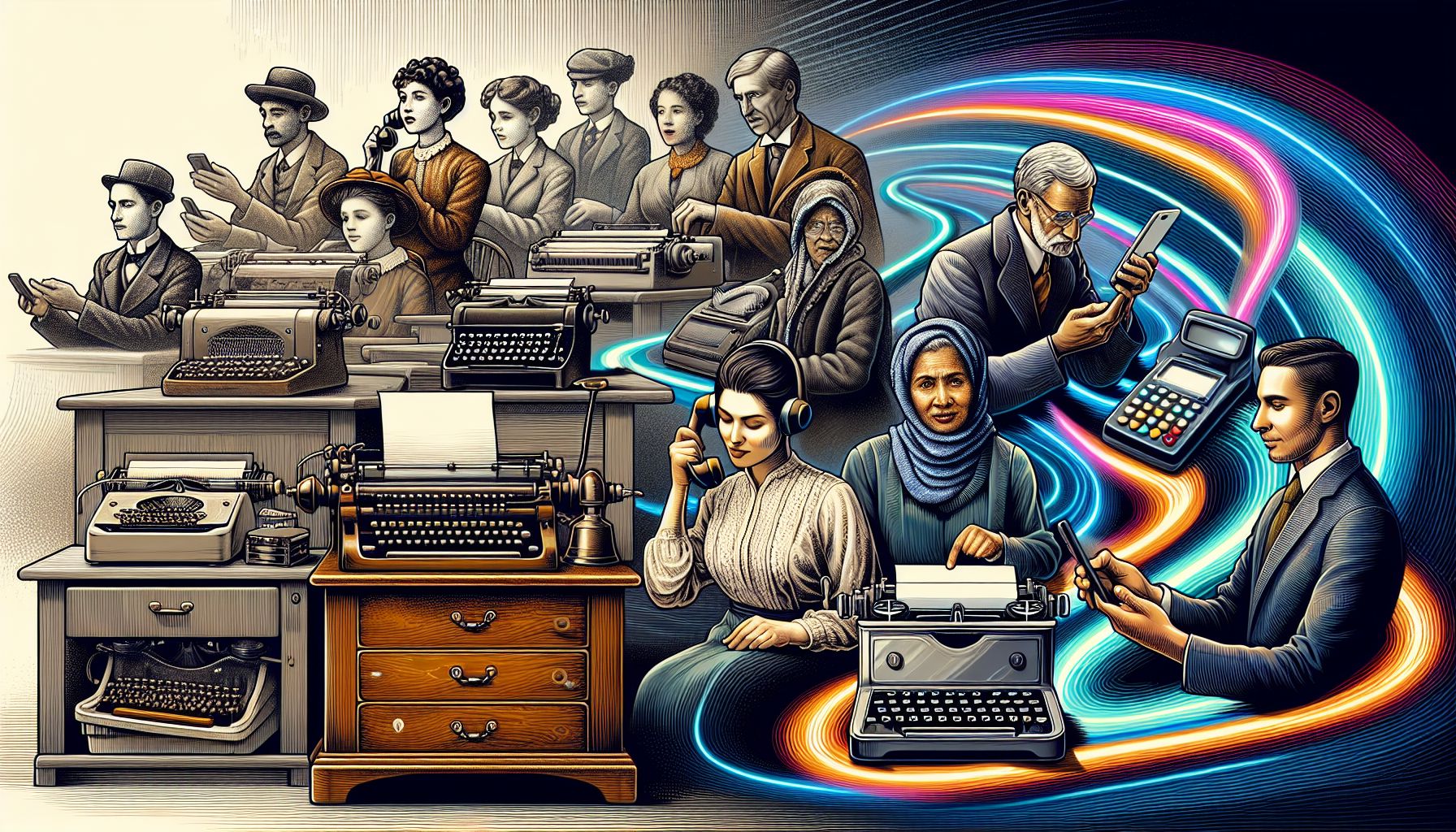📌 Let’s explore the topic in depth and see what insights we can uncover.
⚡ “Did you know a simple series of ‘dots and dashes’ paved the way for the lightning-fast emojis we send today? Let’s dive deep into the evolution of communication technology, from Morse Code to the instant messages that have become our second language!”
Imagine a world without smartphones, without the internet, without even telephones. How would we communicate? It’s hard to fathom, isn’t it? Yet, it’s important to remember that the instantaneous, global communication we enjoy today is the result of centuries of innovation and evolution. This journey from rudimentary Morse code to today’s instant messaging apps is an exciting one, filled with breakthroughs, inventions, and discoveries that have forever changed the way we interact with each other. In this post, we’ll take a step back in time and walk through the evolution of communication technology. We’ll explore how it all started with simple beeps and dots and dashes, then moved on to landlines, then emails, and finally, to the instant messaging platforms we use today. Get ready for a thrilling ride through history, as we unravel the fascinating story of communication technology!
🎩 The Morse Code Era

"Charting the Evolution of Human Connectivity"
The story of modern telecommunication begins in the mid-19th century with the invention of Morse code by Samuel Morse. Morse code used a series of dots and dashes to represent letters, numbers, and other symbols. It was a simple system, but it was a revolutionary breakthrough in its time. Considered the first form of digital communication, Morse code allowed messages to be transmitted over long distances via telegraph wires. Here’s a fun fact: the first message sent using Morse code was “What hath God wrought,” a biblical quote, sent from Washington D.C. to Baltimore in 1844. While Morse code might seem archaic by today’s standards, it laid the foundation for the communication revolution that was about to follow.
☎️ The Telephone Revolution
Fast forward to the late 19th century, and we arrive at the next significant milestone in the history of communication technology: the invention of the telephone by Alexander Graham Bell in 1876. The telephone made it possible to transmit voice over long distances, thus eliminating the need for coded messages. The telephone quickly caught on and by the early 20th century, switchboard operators were connecting calls manually. It wasn’t until the introduction of automatic telephone exchanges in the mid-20th century that the process became automated. One important thing to remember is that the telephone revolutionized not just personal communication, but also business communication. It made it possible for businesses to connect with customers and partners across the globe, paving the way for the global economy we know today.
💻 The Internet and Email
The next major leap in communication technology came with the advent of the internet. The internet started as a military project in the 1960s, but by the 1990s, it had become accessible to the general public. One of the first and most popular uses of the internet was email. With email, people could send and receive text messages instantly, no matter where they were in the world. This was a game-changer. It made communication faster and more efficient than ever before. The invention of email also marked the beginning of the digital revolution. It paved the way for many of the communication technologies we use today, including social media, video conferencing, and yes, instant messaging.
📱 Instant Messaging and Beyond
The invention of the internet and email set the stage for the next big thing in communication technology: instant messaging. Instant messaging made communication even faster and more convenient. With instant messaging, people could send and receive messages in real-time, making communication feel more like a conversation. The first instant messaging service was ICQ, launched in 1996. Since then, many other instant messaging services have been developed, with some of the most popular ones being WhatsApp, Facebook Messenger, and iMessage. Today, instant messaging is more than just a communication tool. It’s a platform for sharing photos, videos, and other multimedia content. It’s a platform for conducting business, for learning, and for entertainment. But the journey of communication technology doesn’t end here. With new technologies like 5G, augmented reality, and artificial intelligence on the horizon, who knows what the future of communication will look like?
🧭 Conclusion
The journey from Morse code to instant messaging is a testament to human ingenuity and innovation. It’s a journey of constant evolution, driven by the human desire to connect and communicate more effectively. Today, we can send a message to anyone, anywhere in the world, in a matter of seconds. We can share our thoughts, ideas, and experiences with a global audience. We can collaborate with colleagues across continents, conduct business transactions with partners around the world, and stay in touch with loved ones no matter where they are. As we look to the future, we can only imagine what new communication technologies will emerge. But one thing is for sure: the journey of communication technology is far from over. So, let’s buckle up and get ready for the next exciting chapter in this ongoing story of innovation and progress.
🚀 Curious about the future? Stick around for more discoveries ahead!
